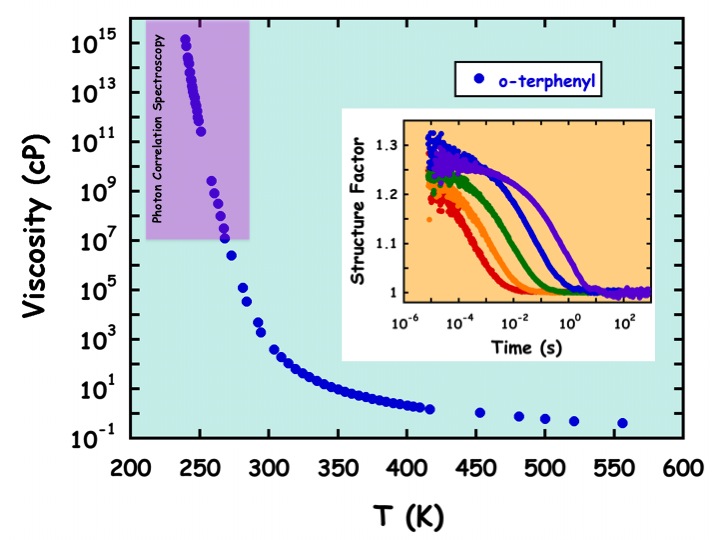 Ortho-terphenyl is a common example of the radical increase of viscosity that occurs near the glass transition of a supercooled liquid. Photon correlation spectroscopy probes the viscoelastic relaxation present in the liquid's dynamic structure factor for times between about 1 microsecond to 100's of seconds.
Ortho-terphenyl is a common example of the radical increase of viscosity that occurs near the glass transition of a supercooled liquid. Photon correlation spectroscopy probes the viscoelastic relaxation present in the liquid's dynamic structure factor for times between about 1 microsecond to 100's of seconds.
While we are most familiar with liquids, like water, that crystalize when cooled below their freezing points, most all substances (including water) can be cooled without crystalliztion into an amorphous (i.e., glass) state wherein the particles appear like a liquid but are no longer able to flow. The transition from liquid to glass remains an active field of inquiry and is ranked among some of the top unsolved questions in physics. In our lab, we are employing dynamic light scattering to investigate the demise of the liquid state as particle motions slow from microseconds to 100s of seconds. Our current efforts are directed at understanding how these slow dynamics are related to details of the bonding in oxide and chalcogenide glass formers.
